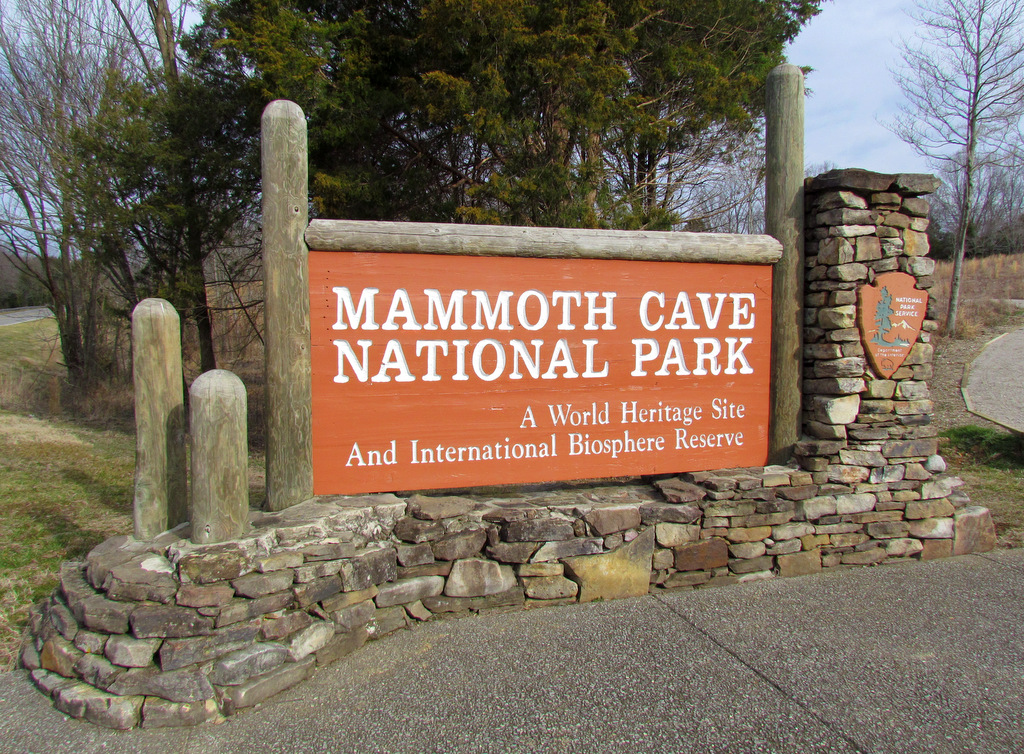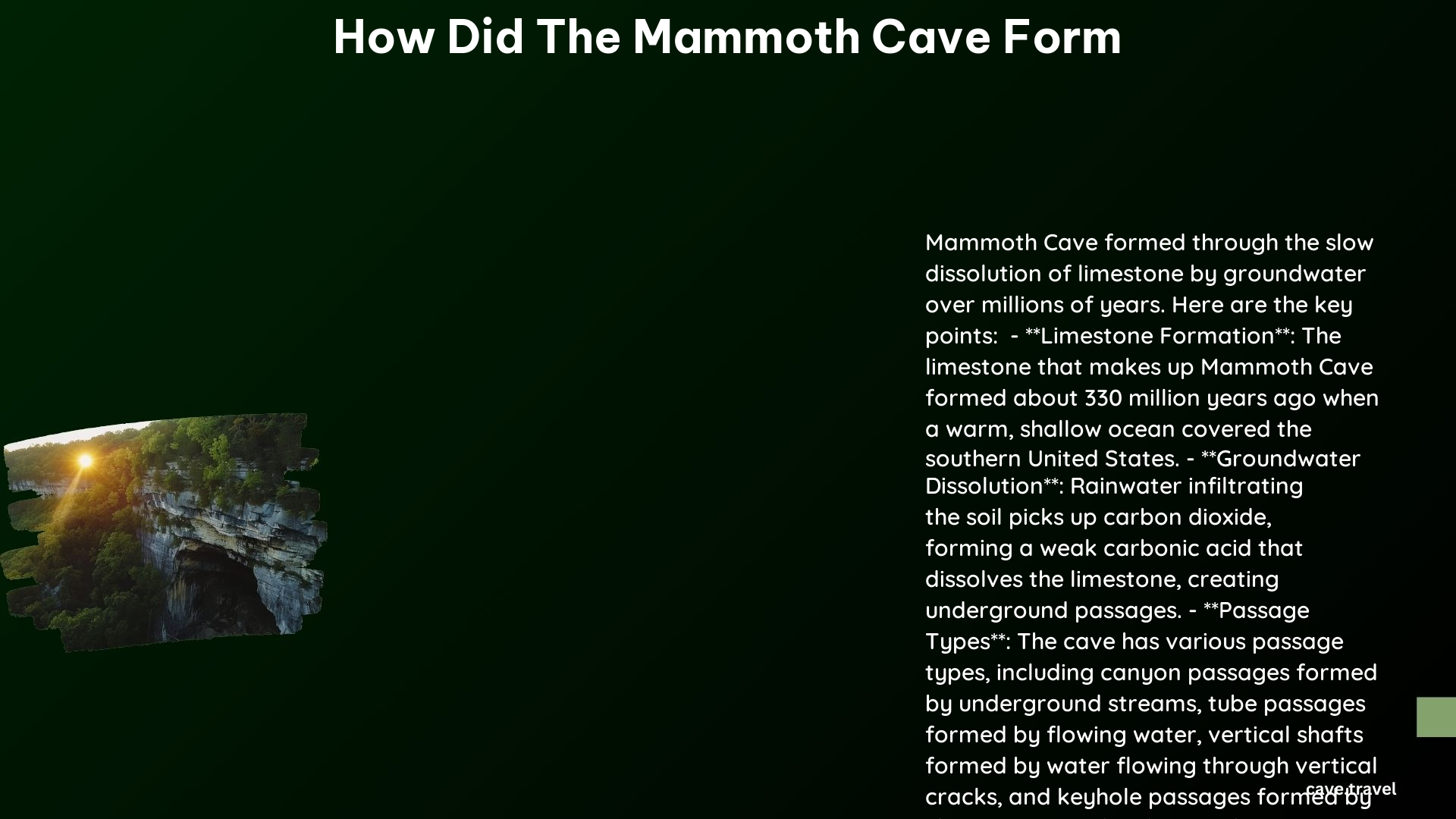The Mammoth Cave, located in Mammoth Cave National Park, Kentucky, is the longest known cave system in the world. The cave’s formation is attributed to the slow dissolution of limestone by groundwater over millions of years. The key geological processes that led to its creation include limestone formation, groundwater dissolution, underground streams and rivers, and the region’s karst topography.
Limestone Formation

The limestone that makes up the cave system formed about 330 million years ago during the Mississippian Period. At that time, a warm, shallow ocean covered much of the southern United States, including parts of Kentucky. The limestone formed from the cementation of calcium carbonate minerals and fossil fragments on the ocean floor.
Groundwater Dissolution

Rainwater infiltrating the soil picked up carbon dioxide, forming a weak carbonic acid. This acidic groundwater slowly dissolved the limestone, creating passages and caverns over time.
Underground Streams and Rivers
As groundwater continued to dissolve the limestone, it formed underground streams and rivers. These streams converged and carved out larger passages, creating the extensive network of caves seen today.
Passage Types
Different types of passages formed depending on the flow of water:
- Canyon passages were formed by underground streams following tilted layers of limestone.
- Tube passages were formed by water flowing through lower levels of the cave.
- Vertical shafts formed where water flowed straight down through vertical cracks in the limestone.
Karst Topography
The region’s karst topography, characterized by sinkholes, sinking streams, and caves, is a result of the soluble nature of limestone. The dissolution of limestone created a landscape of underground passages and surface features like sinkholes.
Role of Underground Rivers and Streams
Underground rivers and streams played a crucial role in shaping Mammoth Cave:
- Eroded Passages: The flowing water eroded the limestone, creating larger passages and caverns.
- Formed Different Passage Types: The flow of water determined the type of passage that formed, such as canyon, tube, or vertical shaft passages.
- Connected Passages: The convergence of underground streams connected different passages, creating the extensive network of caves seen today.
Timeline
- 330 Million Years Ago: Limestone formation during the Mississippian Period.
- 10-15 Million Years Ago: Passage formation began through groundwater dissolution.
- 4,000 Years Ago: Prehistoric peoples explored the cave.
- 1798: The cave was rediscovered.
- 1926: Authorized as a national park.
- 1941: Fully established as a national park.
- 1981: Designated a World Heritage Site.
- 1990: Became the core area of an International Biosphere Reserve.
Current Status
Today, Mammoth Cave National Park is an international treasure, with over 365 miles of surveyed passageways and an estimated 600 miles of undiscovered passages. The park is home to diverse cave ecosystems and unique formations like stalactites, stalagmites, and flowstone.
References:
– https://npshistory.com/publications/maca/index.htm
– https://www.nps.gov/maca/learn/nature/how-mammoth-cave-formed.htm
– https://en.wikipedia.org/wiki/Mammoth_Cave_National_Park
– https://www.nps.gov/maca/learn/nature/stalactites-stalagmites-and-cave-formations.htm
– https://www.nps.gov/maca/learn/nature/rocks-of-mammoth-cave.htm
